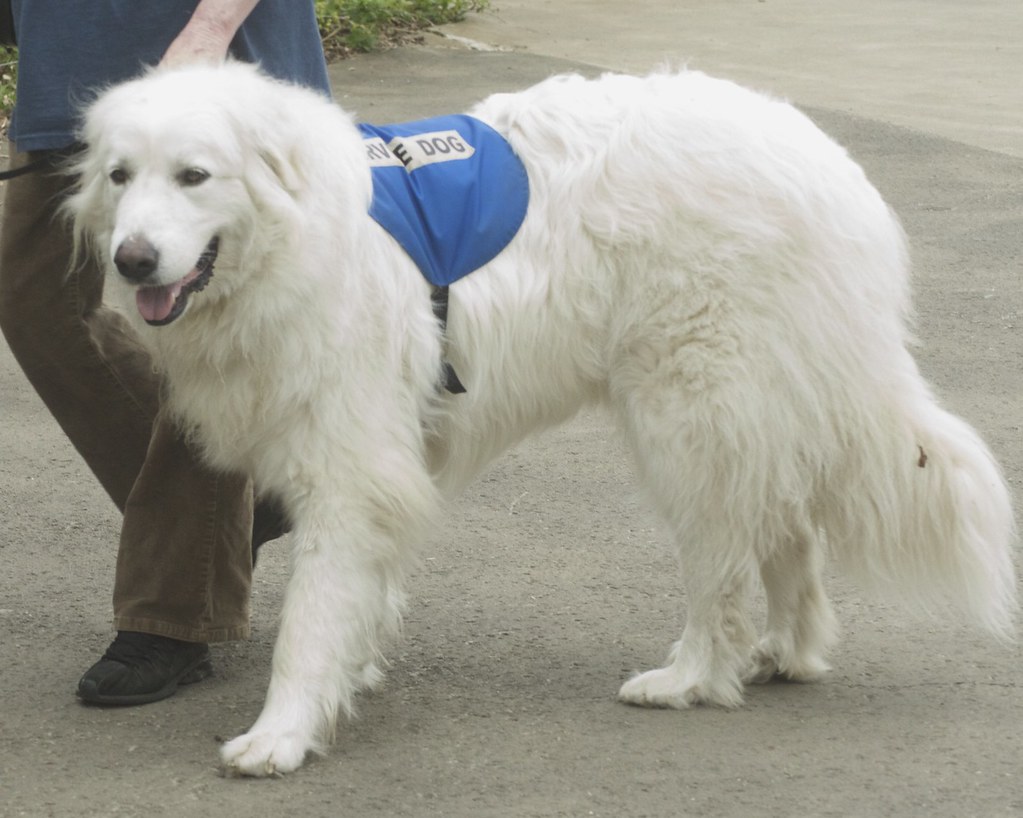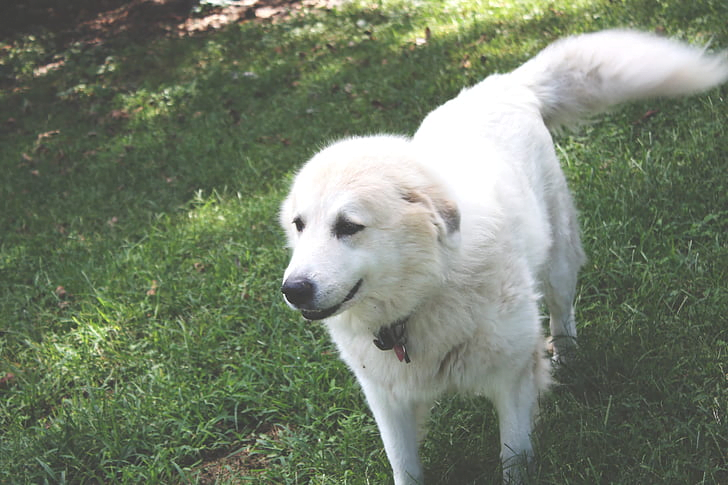The Great Pyrenees, a majestic breed known for its gentle temperament and impressive size, serves as both a loyal companion and a formidable guardian. Originating from the mountainous regions of France and Spain, this breed has been cherished for centuries for its ability to protect livestock from predators. Despite their large stature, Great Pyrenees dogs are known for their calm demeanor, intelligence, and affectionate nature towards their families. They require regular exercise, consistent training, and proper socialization to thrive. This breed’s thick, white coat not only adds to their striking appearance but also provides insulation against cold weather, requiring regular grooming to maintain their health and beauty. Understanding the unique characteristics of the Great Pyrenees is essential for anyone considering adding one of these gentle giants to their family.
Key Takeaways
- Great Pyrenees are large, gentle dogs known for their protective nature, making them excellent family pets and guardians.
- Regular health check-ups and proper care are crucial due to their susceptibility to certain health issues.
- They require space and enjoy outdoor activities, so they’re best suited for homes with ample yard space.
- When considering adoption, seek reputable breeders or adoption agencies familiar with the breed’s specific needs.
- Understanding the breed’s characteristics and needs can significantly enhance the living experience for both the dog and its owner.
- Engaging with a community of Great Pyrenees owners can provide valuable support and advice for new owners.
Breed Overview
History
The Great Pyrenees breed has roots deeply embedded in the Pyrenees Mountains, where they were indispensable shepherds’ companions. They were tasked with a critical role: protecting sheep from wolves and bears. This breed’s prowess was not just limited to guarding livestock. By the 17th century, their regal demeanor and effective guarding abilities caught the attention of the French nobility, who adopted them as guardians of their estates.
Their reputation for loyalty and protection crossed the Atlantic, leading to their recognition by the American Kennel Club in the late 19th century. This milestone marked the beginning of their journey as beloved pets and diligent guards in homes across America.
Physical Characteristics
Great Pyrenees dogs are known for their imposing presence. They boast a large, muscular build complemented by a thick double coat designed to withstand harsh mountain climates. Their coats are predominantly white but often feature shades of gray, red, or tan, adding to their majestic appearance.
These gentle giants stand tall, with an average height ranging from 25 to 32 inches at the shoulder. This size is not just for show; it equips them well for their traditional role of warding off predators and protecting their flock or family.
Personality and Temperament
Despite their size, Great Pyrenees dogs exude calmness and patience. They form strong bonds with their families, showing affection and gentleness. However, they maintain a cautious demeanor around strangers, a trait that stems from their guarding instincts.
Their independence is one of their most notable characteristics. It allows them to make quick decisions when protecting livestock or home but can also present challenges during training sessions. Owners need patience and consistency to harness this breed’s intelligence and independent thinking into positive behaviors.
 Creator: Jean Ogden Just Chaos Photography
Creator: Jean Ogden Just Chaos Photography
Health And Care
Common Health Issues
Great Pyrenees dogs are magnificent and robust, yet they face several health challenges. They often develop hip dysplasia, a painful condition where the hip joint does not fit correctly, leading to arthritis. Bone cancer is another serious concern for these large breeds, significantly impacting their quality of life.
These gentle giants can also suffer from bloat or gastric torsion. This condition is an emergency that requires immediate veterinary attention to save the dog’s life. Moreover, Great Pyrenees may inherit conditions like patellar luxation, where the kneecap dislocates, and various eye disorders that can impair vision if not treated promptly.
Dietary Needs
Due to their large stature, Great Pyrenees need a diet rich in proteins and fats to support muscle strength and energy levels. Portion control is essential to avoid obesity, particularly for those that lead a more sedentary lifestyle.
Supplements can play a crucial role in maintaining joint health and ensuring a shiny coat. Ingredients like fish oil, glucosamine, and chondroitin are beneficial for these purposes. Owners should consult with a veterinarian to tailor a diet plan that meets all nutritional needs while preventing weight gain.
Exercise Requirements
Regular exercise is vital for keeping a Great Pyrenees healthy and happy. Moderate activities such as hiking and long walks provide excellent opportunities for physical exertion while strengthening the bond between the dog and its owner. Secure play areas allow them to roam freely and play without risk of wandering off.
Mental stimulation through interactive toys or training sessions prevents boredom and promotes mental health. These activities keep their minds sharp and engage their natural instincts in positive ways.
Grooming
Grooming is an integral part of caring for a Great Pyrenees. Regular brushing at least once a week helps manage shedding and prevents matting of their thick fur. Bathing should be infrequent to maintain the coat’s natural oils but might increase during shedding periods to help remove dead hair.
Nail trimming is essential for comfort and mobility, while ear cleaning prevents infections. Dental care cannot be overlooked; regular brushing reduces the risk of periodontal disease, contributing to overall health.
Living with a Great Pyranees
Training and Socialization
Early socialization for a Great Pyrenees is not just beneficial; it’s essential. This breed can develop overprotectiveness and shyness if not properly introduced to various people, places, and situations from a young age. They thrive on positive reinforcement and consistent training methods. Harsh corrections or inconsistent commands can lead to confusion and stubbornness in this intelligent breed.
Great Pyrenees dogs are known for their calm and patient demeanor, but they require a firm yet gentle hand in training. With the right approach, these dogs can excel in obedience and agility courses. Their intelligence and eagerness to please make them capable learners who enjoy the mental stimulation that comes with training.
Environment
The ideal living situation for a Great Pyrenees is a home that offers plenty of space both indoors and out. These large dogs need room to roam and explore, making a home with a yard highly preferable. Apartment living can be challenging due to their size and need for regular exercise.
Despite their thick coats, Great Pyrenees can adapt to various climates. However, they are particularly well-suited to cooler environments where they can stay comfortable during physical activities. In warmer climates, owners should ensure their pets have access to shade and water to prevent overheating.
Activities They Enjoy
Outdoor adventures are a favorite for Great Pyrenees dogs. They love hiking, camping, and exploring nature, often serving as vigilant companions on such excursions. Their protective instincts also make them excellent partners for walks in more secluded areas where safety might be a concern.
In addition to outdoor adventures, Great Pyrenees enjoy being part of family activities. Whether it’s playing in the backyard or participating in dog sports like agility or herding trials, these dogs appreciate being involved in the action. Their sociable nature means they’re happiest when included in family gatherings or outings.
 Copyright © 2013 Alexandra Stevenson
Copyright © 2013 Alexandra Stevenson
Breeder Advice and Adoption
Choosing a Breeder
When searching for a Great Pyrenees puppy, selecting the right breeder is crucial. Look for breeders who prioritize the health of their dogs. This includes performing health screenings and genetic testing on their breeding pairs to ensure they are free from inheritable conditions common in the breed.
A reputable breeder will not hesitate to share detailed information about the puppy’s health history and parentage. They understand the importance of transparency in building trust with potential owners.
It’s also essential to choose breeders who raise puppies in a home environment. Puppies that grow up in a family setting are generally more socialized and adapt better to various situations. Breeders should also practice early socialization, exposing puppies to different people, sights, and sounds, which is vital for their development.
Adoption
Adoption offers an alternative path to welcoming a Great Pyrenees into your home. Many rescues specialize in large breeds or specifically the Great Pyrenees. They work hard to match dogs with suitable families, ensuring a good fit for both parties.
Adopting a dog often comes with an adjustment period. Dogs may need time to acclimate to their new surroundings and family members. Patience and understanding during this phase are key to helping your new pet settle in.
Choosing adoption not only provides a loving home to a dog in need but can also be incredibly rewarding for the adopter. It’s an opportunity to make a significant difference in an animal’s life.
Misc.
Popular Names
Choosing the right name for a Great Pyrenees can be as majestic as the dog itself. Names like Bear, Luna, Ghost, and Snow capture their noble appearance and unique personality. These names mirror their white, fluffy coats and grand stature.
For those looking to honor their French roots, traditional French names such as Jacques or Belle are perfect. They pay homage to the breed’s origin with a touch of elegance. Names that embody their protective nature, like Guardian or Titan, highlight their role as vigilant protectors of their family.
Fun Facts
The Great Pyrenees breed boasts some distinctive features that set them apart. One notable trait is the unique double dewclaw on each hind leg. This feature is not just for show; it has historical significance in aiding these dogs while traversing the snowy mountains they originated from.
Their thick, weather-resistant coat is another marvel. It offers insulation against both cold and heat, allowing them to adapt to various climates despite their heavy fur. Historically, these dogs held a prestigious position as the Royal Dog of France under King Louis XIV’s reign, showcasing their esteemed status through history.
Common Myths
Several myths surround the Great Pyrenees that often mislead potential owners. Contrary to popular belief, they are not lazy; their calm demeanor simply reflects a patient and watchful guardian instinct. Their thick coat might suggest otherwise, but these dogs can adapt well to warm climates with proper care and hydration.
Another common misconception is that due to their large size, Great Pyrenees might not be suitable for families with children. However, they are known for being gentle giants who show great affection and patience towards kids, making them excellent family pets.
Most Similar Breed
When comparing breeds similar to the Great Pyrenees, the Bernese Mountain Dog immediately comes to mind. Both share striking similarities in size, temperament, and working background. They excel in roles within families and on farms due to their gentle nature and strong work ethic.
However, differences do exist between these two friendly giants. The Bernese Mountain Dog sports a distinct tricolor coat compared to the predominantly white fur of the Great Pyrenees. Moreover, it’s important for potential owners to note that Bernese Mountain Dogs generally have a shorter lifespan than Great Pyrenees.

Top Dog Grooming Tools (Click Here)
Final Remarks
The Great Pyrenees stands as a noble and dependable breed, combining strength with gentleness. Their care, health, and the joy they bring to living environments underscore their value as companions. Prospective owners should heed breeder advice and consider adoption to ensure these majestic dogs find suitable homes. They require attention, regular health checks, and a loving environment to thrive. This breed’s resilience and affectionate nature make it an excellent choice for families seeking a protective yet gentle pet. The journey with a Great Pyrenees offers a unique blend of challenges and rewards, highlighting the importance of informed ownership.
For those considering adding a Great Pyrenees to their home, it’s crucial to engage in thorough research and preparation. Embrace the opportunity to provide a nurturing environment for these magnificent dogs. Their loyalty and companionship will enrich your life in countless ways. Take the first step towards responsible pet ownership today.
Frequently Asked Questions
How big do Great Pyrenees get?
Great Pyrenees typically reach 25 to 32 inches in height at the shoulder and can weigh between 85 to over 100 pounds. Males are generally larger than females.
What health issues are common in Great Pyrenees?
Common health issues include hip dysplasia, bloat, and bone cancer. Regular veterinary check-ups are essential for early detection and management.
How often should a Great Pyrenees be groomed?
They require weekly brushing to manage their thick, double coat and more frequent grooming during their bi-annual shedding seasons to prevent matting.
Are Great Pyrenees good family pets?
Yes, they are known for their gentle temperament and loyalty. They can be great with children if socialized properly but may be wary of strangers due to their protective nature.
What is the lifespan of a Great Pyrenees?
The average lifespan of a Great Pyrenees is 10 to 12 years. Proper care, nutrition, and regular veterinary visits can contribute to a healthy life.
Can Great Pyrenees live in hot climates?
While they prefer cooler temperatures due to their thick fur, they can adapt to warmer climates with proper shade, hydration, and indoor access during extreme heat.
What should I know before adopting a Great Pyrenees from a breeder?
Ensure the breeder conducts health screenings on their breeding dogs for common genetic conditions. Ask about the puppy’s socialization experiences and meet the puppy’s parents if possible to gauge future temperament.






0 Comments